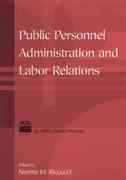Am stuck please someone to help me solve the following questions for easy revisions please
7. (a) Explain FOUR assumptions underlying the Law of Comparative Advantage (20 marks) (b) Ireland relies heavily on international trade. Explain THREE factors which affect the competitiveness of Irish-based firms in international trade. Use examples to support your answers. (30 marks) (c) The enlargement of the European Union (EU) to include many new countries will be economically significant for Ireland. Outline the main economic opportunities and challenges for the Irish economy following enlargement of the EU. (25 marks) [75 marks] 8. (a) Outline, using appropriate figures, how the Irish economy performed in the past twelve months in each of the following areas: employment; (ii) price inflation; (iii) economic growth; (iv) government spending. (20 marks) (b) In recent years Ireland's National Debt as a percentage of Gross Domestic Product (GDP) has declined. Discuss the economic consequences of this development for the Irish Economy. (25 marks) (c) (i) Outline the main sources of government revenue. (ii) Discuss the economic consequences of a government policy to increase public service charges (e.g. road tolls, bin charges, TV, licences) rather than raise tax levels for the Irish economy. (30 marks) [75 marks]5. (a) Discuss how economic development in less developed countries (LDCs) might be promoted: (i) by their own governments; ii) by foreign governments / agencies. (30 marks) (b) (i) Discuss THREE economic benefits of economic development to LDCs. (ii) Discuss THREE economic costs of economic development to LDCs. (30 marks) (c) Discuss steps which could be taken to solve the debt crisis which LDCs are experiencing. (15 marks) [75 marks] 6. (a) Explain the following terms which are commonly used in estimating the National Income statistics of a country: Incomes-in-kind; (ii) Transfer Payments; (iii) Net Factor Income from the Rest of the World. (20 marks) (b) The table below shows the levels of National Income, Consumption, Investment, Exports and Imports at the end of Year 1 and Year 2. (For the purpose of this question you may ignore the government sector.) Year National Income Consumption Investment Exports Imports (5,000 64,300 500 E600 E400 2 65,600 (4.750 E650 (750 Calculate the following, showing all your workings: (i) The level of Imports in Year 2. (ii) The Marginal Propensity to Import. (iii) The Marginal Propensity to Save. (iv) The size of the Multiplier. Explain the economic meaning of this figure. (25 marks) (9) National Income statistics provide important information, but are subject to certain limitations. Explain THREE reasons why it is useful to have these statistics. (ii) Explain THREE limitations as to the use of these statistics. (30 marks) [75 marks]3. (a) (i) State the Law of Diminishing Marginal Returns. (ii) Using the table below, state after which level of employment diminishing marginal returns set in. Explain your answer. Number of persons employed 2 5 Total Output (in units) 14 30 50 76 Marginal Output (in units) 14 (15 marks) (b) The short-run average cost curve of a firm initially slopes downwards and afterwards slopes upwards. Explain why this is the pattern of short-run average costs. (15 marks) (c) It is generally agreed that the long-run average cost curve initially slopes downwards due to economies of scale and then slopes upwards due to diseconomies of scale. These economies and diseconomies can be both internal and external. (i) Define the underlined terms. (ii) Distinguish between internal and external economies of scale, giving TWO examples in each case. (30 marks) (d) While there can be advantages from producing on a large scale, the majority of firms in Ireland are small. Explain THREE reasons why small firms survive in the Irish economy. (15 marks) [75 marks] 4. (a) In relation to the factor of production Enterprise: (i) Distinguish between insurable risks and non-insurable risks and state TWO examples in each case. (ii) Explain TWO reasons why 'enterprise' is considered to be a unique factor of production. (25 marks) (b) ) Explain what is meant by the term Marginal Efficiency of Capital (MEC). (ii) Discuss FOUR factors, other than MEC, which influence the level of investment by entrepreneurs. (30 marks) (c) Discuss the role of profits in promoting development in a modern market economy. (20 marks) [75 marks]1. (a) Explain, with the aid of a diagram, the long run equilibrium position of a monopoly firm. (25 marks) (b) If firms wish to enter a monopoly market they will face barriers to entry. Explain THREE of these barriers. (15 marks) (c) If a monopoly firm wishes to engage in price discrimination, certain conditions must apply. State and explain THREE of these conditions. (15 marks) (d) Irish semi-state transport companies are facing increasing competition. Discuss ONE possible advantage and ONE possible disadvantage of this development for: . Consumers; AND . Employees of semi-state transport companies. (20 marks) [75 marks] 2. (a) Define the following types or degrees of price elasticity of demand: (i) Perfectly elastic demand; (ii) Perfectly inelastic demand; (iii) Elastic demand; (iv) Unitary elastic demand. (20 marks) (b) State and explain FIVE factors that affect price elasticity of demand. (25 marks) (c) A consumer spends (120 per month on a product when its unit price is 80c, and continues to spend E120 per month on this product when its unit price increases to (1. (i) Using the formula below, calculate the consumer's price elasticity of demand. Show all your workings. AQ x Pi + P2 AP Q1 + Q2 (ii) Is demand for this product elastic, inelastic or unitary elastic? (iii) Should the seller make any changes in the selling price of this commodity to increase overall revenue? Explain your answer. (30 marks) [75 marks]










